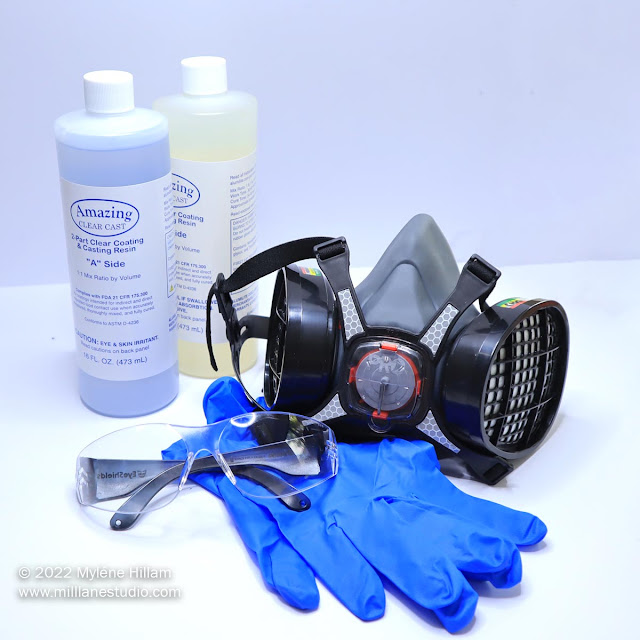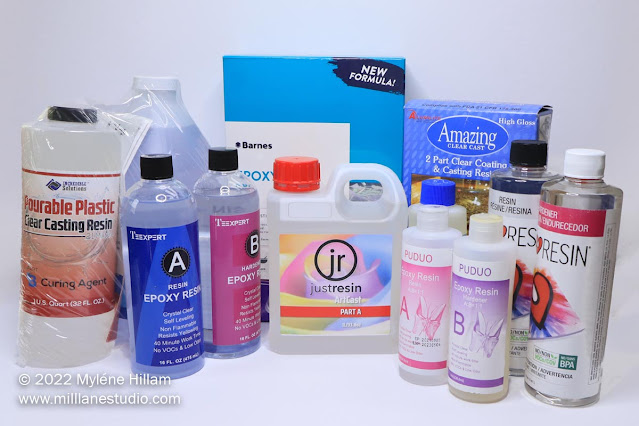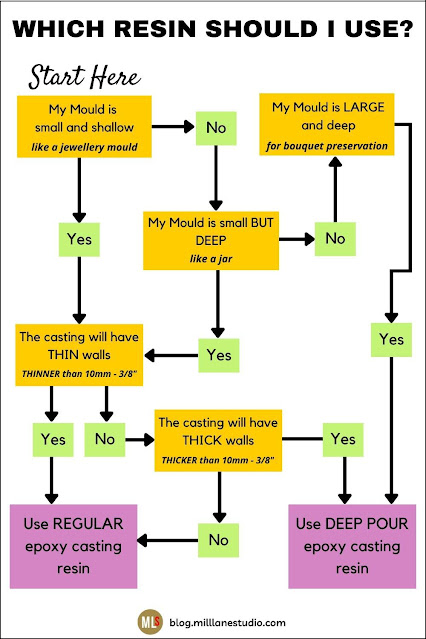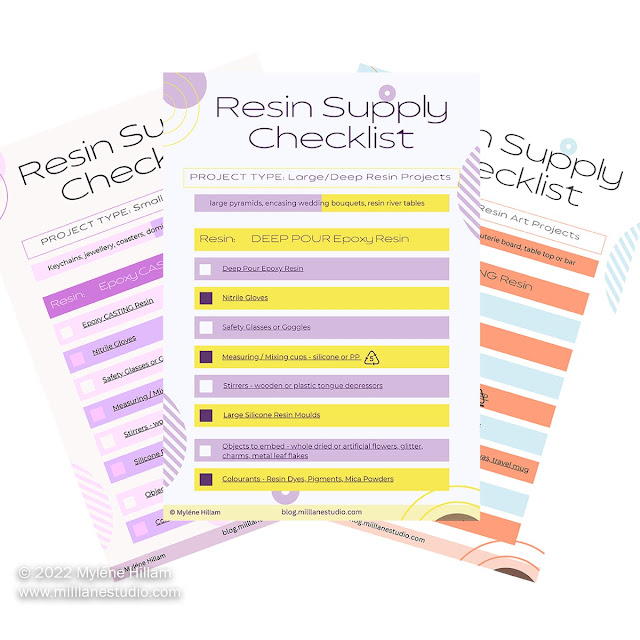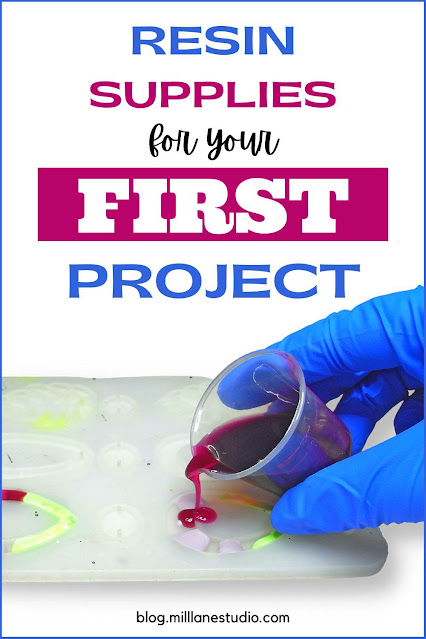Inside: Find out what tools and supplies you need to start with resin. This guide will help you buy all the essential supplies without breaking the bank!
How exciting... you've decided you want to make AWESOME things with
resin!
But where do you start?...
And, WHAT DO YOU NEED TO BUY TO START RESIN?
You've probably got a ton of questions racing through your head right
now.
So, before you run off and buy resin and supplies that aren't suitable, let's slow down, take a breath and start with the basics.
The Supplies You Need to Get Started with Resin
The best way to start is to keep it simple... just get the essential, must-have tools and supplies that you can't get by without.
There's no need to outlay a large amount of money to get started... pick the right tools and equipment for what you want to make, and you
won't waste money on supplies you'll never use.
WARNING: If you've already bought resin, DON'T OPEN IT YET.
It might not be the right type of resin for what you want to make.
I'll tell you more about that shortly.
Believe it or not, there are other important resin tools and supplies that you need BEFORE you open your resin. Let's start with those first.
Essential Resin Tools - You MUST Have These Things
Safety Equipment
Most resins have very little odour so it's easy to forget that you're
working with chemicals. Resin is a skin irritant, PLUS it's super sticky, so you'll need some basic protective equipment:
- nitrile gloves to keep resin off your hands (they are stronger and more chemical resistant than latex gloves)
- protective eyewear in case of splashes.
Make sure you order plenty of gloves because you will be messy in the beginning.
The basic safety equipment will help you STAY SAFE
when working with resin. Find out the BEST TIPS for working safely with resin here. And, download my FREE 12-point safety
checklist.
Next, you need stir sticks and measuring cups so you can measure and
mix the resin.
- Wooden stir sticks are great if you're happy to dispose of them after use.
Want to reduce waste? Buy plastic or silicone spatulas. These are my faves. I clean and re-use them over and over - a great MONEY-SAVER!
- The same goes for mixing and measuring cups. Save money and save the planet by using either PP (plastic with the number 5 inside the recycling triangle) or silicone cups.
Resin doesn't stick to either of these, and they're easy to clean and re-use.
Resin Supplies for YOUR FIRST RESIN PROJECT
Now, let's look at the stuff you're really asking about... the fun
items that will help you make the incredibly COOL THINGS you've seen on
Pinterest, Instagram and Google.
Resin is on top of this list.
And you'll buy it again and again as you use it
up, especially once you get hooked... and I promise, you will get hooked! 🤩
So, you've been told you need epoxy, right? But what epoxy resin should you
buy?
To the resin beginner, they all look the same.
There are many TYPES OF EPOXY. It's totally confusing to know which one to buy.
So let's start with this.
Each type of epoxy has a DIFFERENT PURPOSE...
... some are designed for pouring into small, shallow moulds
... some are designed for pouring into really deep moulds and cavities
... and some are used for coating surfaces.
These 3 types of epoxy cover what most resin beginners want to do.
So before buying resin, ask yourself these questions. Do I want to:
-
Make small items like jewellery, keyrings, coasters and dominoes?
- Encapsulate objects inside a large, deep mould, like a pyramid or a solid block?
- Coat things like tumblers, and cheeseboards, make resin paintings or resurface my kitchen counter?
Once you know what you want to make, you can choose the right resin for
your projects.
Read on to find out more...
1. Resin and Supplies for Casting Small Objects
- Choose EPOXY CASTING RESIN.
- Flexible silicone moulds. There are literally tons to choose from on Amazon. No matter what small items you want to make, there's a mould for that!
Try these 10 fun moulds to get started.
- Inclusions. These are all the fun things you embed in resin that personalise your piece and make it truly unique; try things like dried flowers, glitter, charms, and metal leaf flakes.
2. Resin and Supplies for Large Casting Projects and Deep Pours
- If you want to embed your wedding bouquet in resin then you need a DEEP POUR EPOXY. This epoxy is used to fill deep moulds, like large pyramids, spheres and blocks. Deep Pour epoxy is also used for resin river tables, but that's another story!
- A deep silicone mould. A deep mould is a mould that is at least 50mm or 2" deep (or thick) and takes more than 180ml (6oz) resin to fill. These moulds are ideal for wedding bouquets
- Larger fillers and inclusions. Some popular ones are whole dried flowers (or artificial flowers), miniatures, charms, battery-operated LED light strings, and life energy metal stickers.
If you're still not sure which epoxy to use for your moulds, follow the chart below...
3. Resin and Supplies for Coating Surfaces
- Choose EPOXY COATING RESIN.
- For resin art pieces, you need a coating resin like this one that has UV inhibitors and HALS (fancy ingredients that stop the resin from yellowing)
- To update your kitchen counter, bartop or vanity, this resin is a good choice
- You need a food-safe resin for coating tumblers or a charcuterie board. This resin complies with the FDA's guidelines for food safety.
- A substrate (the flat surface you'll work on)
- A wooden panel or canvas
- Stainless steel travel mug or tumbler and a cup turner
- Wooden grazing board. These are known by lots of different names: cheeseboard, charcuterie board, chopping board, serving board, pizza peel)
- Tabletop, bar, vanity or kitchen counter
- Tape to stop the resin from dripping over the edge or getting onto areas you don't want resin. This one gives you a good edge and is economical.
Colourants - Resin Dyes and Pigments
I've left this until last because you can use colourants in all the resins I suggested.
To get successful results with colourants, choose RESIN DYES and PIGMENTS designed for epoxy.
These colourants are made with the chemistry of resin in mind so they won't
cause curing problems like art and craft paint can.
Take it from an expert that not all craft colourants work with resin...
... some fade in time (making your project look washed out)
... some completely change colour!
... some stop the resin from curing properly so it stays soft, bendy, or sticky!
... others cause the resin to seize up and drastically shorten the time you have to work with the resin. Sometimes, it even starts to CURE IN YOUR CUP!!
So why risk wasting your expensive resin and ruining your gorgeous project by using colourants that weren't made for resin?
You can also use mica powder, glitter and metal leaf to get different effects in the resin.
Now that you know what supplies you need, go back and take a look at the resin you've already bought and check that it's the right type of epoxy for what you want to make. If it's not the right type for your project, don't open it. Unopened, it will stay fresh for up to 12 months.
Ready to get started?
Here's a BONUS - Get the downloadable Shopping Lists Here
PIN THIS FOR LATER

Subscribe to my email list and learn how to resin like an expert.

